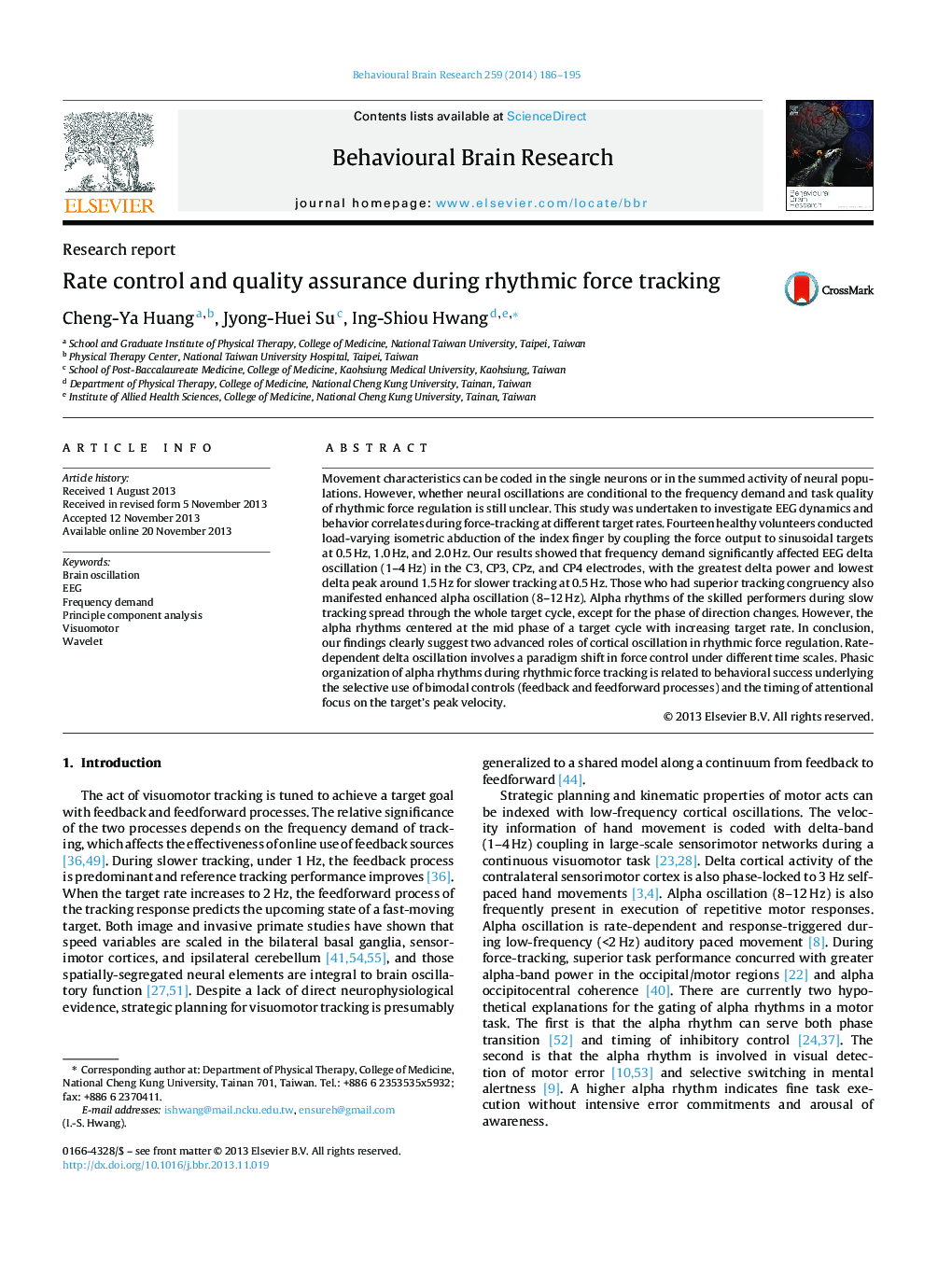| کد مقاله | کد نشریه | سال انتشار | مقاله انگلیسی | نسخه تمام متن |
|---|---|---|---|---|
| 6258575 | 1612973 | 2014 | 10 صفحه PDF | دانلود رایگان |
Movement characteristics can be coded in the single neurons or in the summed activity of neural populations. However, whether neural oscillations are conditional to the frequency demand and task quality of rhythmic force regulation is still unclear. This study was undertaken to investigate EEG dynamics and behavior correlates during force-tracking at different target rates. Fourteen healthy volunteers conducted load-varying isometric abduction of the index finger by coupling the force output to sinusoidal targets at 0.5Â Hz, 1.0Â Hz, and 2.0Â Hz. Our results showed that frequency demand significantly affected EEG delta oscillation (1-4Â Hz) in the C3, CP3, CPz, and CP4 electrodes, with the greatest delta power and lowest delta peak around 1.5Â Hz for slower tracking at 0.5Â Hz. Those who had superior tracking congruency also manifested enhanced alpha oscillation (8-12Â Hz). Alpha rhythms of the skilled performers during slow tracking spread through the whole target cycle, except for the phase of direction changes. However, the alpha rhythms centered at the mid phase of a target cycle with increasing target rate. In conclusion, our findings clearly suggest two advanced roles of cortical oscillation in rhythmic force regulation. Rate-dependent delta oscillation involves a paradigm shift in force control under different time scales. Phasic organization of alpha rhythms during rhythmic force tracking is related to behavioral success underlying the selective use of bimodal controls (feedback and feedforward processes) and the timing of attentional focus on the target's peak velocity.
Journal: Behavioural Brain Research - Volume 259, 1 February 2014, Pages 186-195
